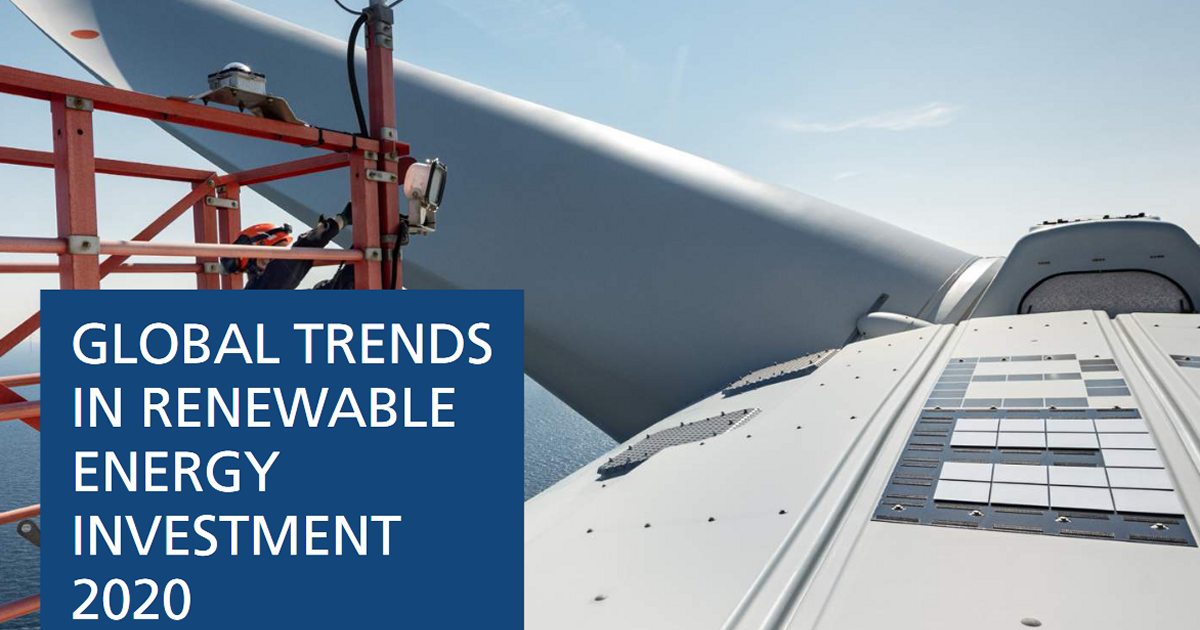
Governments around the world are to inject huge amounts of money into their economies as part of the COVID-19 recovery process. A new report says plowing dollars into renewables rather than fossil fuels will buy more generation capacity than ever and provide stronger action on a major threat to the entire planet – climate change.
The report – Global Trends in Renewable Energy Investment 2020 – from the UN Environment Programme (UNEP), the Frankfurt School-UNEP Collaborating Centre and BloombergNEF (BNEF) makes a strong case for a renewables-led recovery.
“The chorus of voices calling on governments to use their COVID-19 recovery packages to create sustainable economies is growing,” said UNEP Executive Director Inger Andersen . “This research shows that renewable energy is one of the smartest, most cost-effective investments they can make in these packages.”
More Bang For Buck, More Bucks Needed
The report indicates new renewable energy capacity, not including large hydro, grew by a record 184 gigawatts last year. This was 20GW or 12% more than new capacity added in 2018. But the 2019 dollar investment was only 1% higher, at USD $282.2 billion.
Things weren’t so great in Australia though. The report notes while this country enjoyed record investment in renewables in 2018, as it became clear no further capacity was required to meet the Large-scale Renewable Energy Target (LRET) last year, this led to a 40% fall in investment. However, the report states small-scale solar power in Australia remained an area of strength (and that’s certainly continuing this year).
Last month, Australia’s Clean Energy Council released a report stating a COVID-19 economic recovery here led by accelerated renewables and energy storage investment could create tens of thousands of jobs.
Looking ahead, the UNEP report finds commitments for 826GW of new non-hydro renewable power capacity globally by 2030, costing around $1 trillion. It’s a lot of new capacity but not enough.
“…these commitments fall far short of what is needed to limit the rise in global temperatures to less than 2 degrees Celsius under the Paris Agreement. It also falls short of last decade’s achievements, which brought around 1,200GW of new capacity for $2.7 trillion.”
The foreword states if governments take advantage of the plummeting cost of renewables to make clean energy a centrepiece of COVID-19 economic recovery instead of subsidising the recovery of fossil-fuel industries:
“..they can take a big step towards clean energy and a healthy natural world – which ultimately is the best insurance policy against global pandemics.”
The full Global Trends in Renewable Energy Investment 2020 report can be viewed here.
Earlier this month, the International Renewable Energy Agency published a report demonstrating the case for new and much of existing coal power generation capacity is environmentally *and* economically unjustifiable.

 RSS - Posts
RSS - Posts



Speak Your Mind